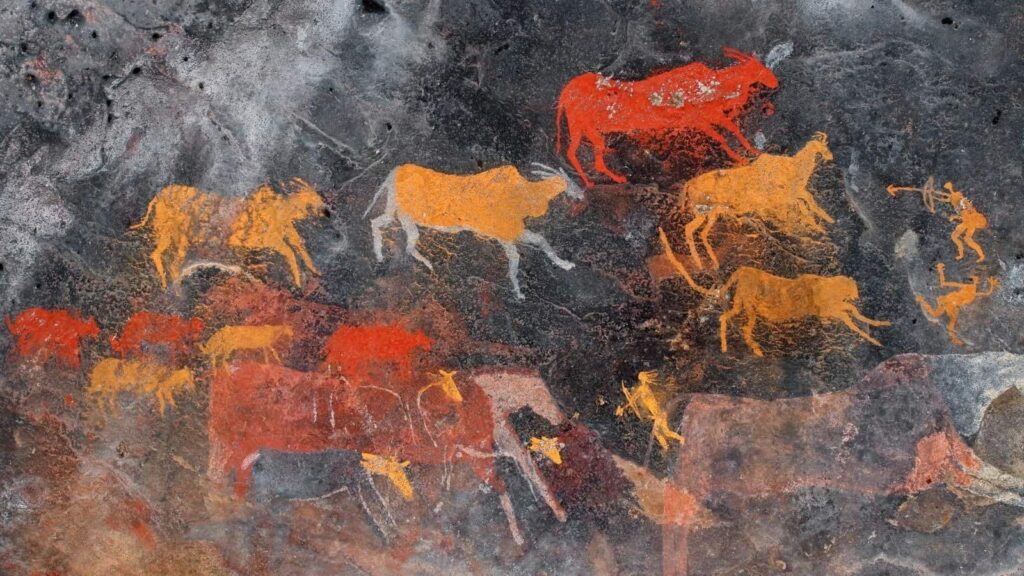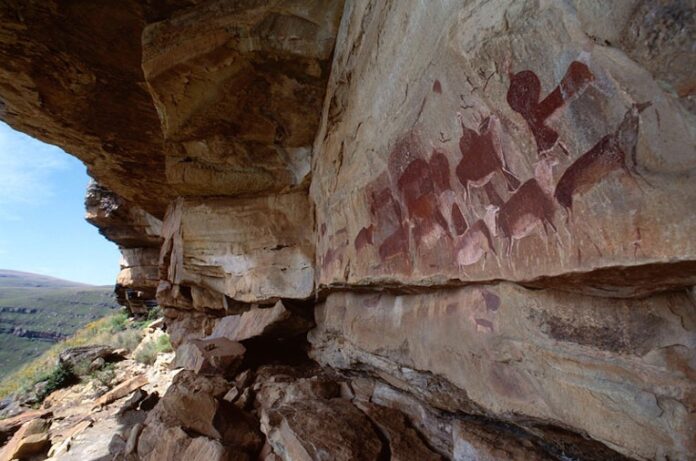Nestled in the rugged landscapes of southern Africa, the ancient rock art of the San people stands as one of the most profound and enduring testaments to human creativity and spirituality.
Created over thousands of years, these intricate paintings and engravings offer a glimpse into the lives, beliefs, and worldviews of one of the oldest cultures on Earth. The San, often referred to as Bushmen, are indigenous hunter-gatherers who have inhabited the region for at least 20,000 years, and their rock art is a treasure trove of cultural and historical significance.
A Canvas of Stone
The rock art of the San is primarily found in caves and rock shelters across South Africa, Namibia, Botswana, and Zimbabwe. These sites, often hidden in remote and breathtaking locations, feature vivid depictions of animals, human figures, and abstract symbols.

The paintings were created using natural pigments, such as ochre, charcoal, and clay, mixed with animal fat or plant sap to create a durable paint. The result is a stunning array of reds, yellows, whites, and blacks that have withstood the test of time.
The art is not merely decorative; it is deeply symbolic. The San believed that the rock surfaces were a veil between the physical and spiritual worlds. By painting on these surfaces, they were communicating with the divine, recording their experiences, and preserving their cultural heritage.
The images often depict scenes of hunting, dancing, and rituals, reflecting the San’s intimate connection with nature and their reliance on the land for survival.
The Spirit World and the Trance Dance
Central to understanding San rock art is the concept of the trance dance, a spiritual practice that remains a cornerstone of San culture.
During these dances, shamans, or spiritual healers, enter altered states of consciousness to commune with the spirit world. They believe that this trance state allows them to heal the sick, control the weather, and ensure successful hunts.
Many of the rock art scenes are thought to depict these trance experiences. Human figures with elongated limbs, contorted postures, and antelope-like features are common, symbolizing the transformation of shamans into spirit beings. Animals, particularly the eland (a large antelope), are also prominently featured. The eland was considered a sacred animal, embodying spiritual power and serving as a bridge between the human and spirit worlds.
A Legacy Under Threat
Despite their cultural and historical importance, many San rock art sites are under threat. Natural erosion, vandalism, and urban development have damaged or destroyed countless paintings.
Efforts to preserve these sites are ongoing, with organizations and governments working to protect and document the art. However, the challenge remains immense, as many sites are located in remote areas that are difficult to monitor and maintain.
The San people themselves have faced centuries of marginalization and displacement, which has disrupted their traditional way of life and threatened their cultural heritage. Today, many San communities are fighting to reclaim their land and preserve their traditions, including the knowledge and practices associated with rock art.
A Connection to Our Shared Humanity
The rock art of the San is more than just an archaeological curiosity; it is a profound expression of human creativity and spirituality. It reminds us of the deep connections between art, culture, and the natural world, and it offers a rare glimpse into the lives of our ancient ancestors. As we strive to protect these irreplaceable treasures, we also honor the resilience and wisdom of the San people, whose legacy continues to inspire and enlighten us.
In a world that often feels disconnected from its roots, the ancient rock art of the San serves as a powerful reminder of our shared humanity and the enduring power of storytelling through art. It invites us to pause, reflect, and appreciate the rich tapestry of human history that has brought us to where we are today.

